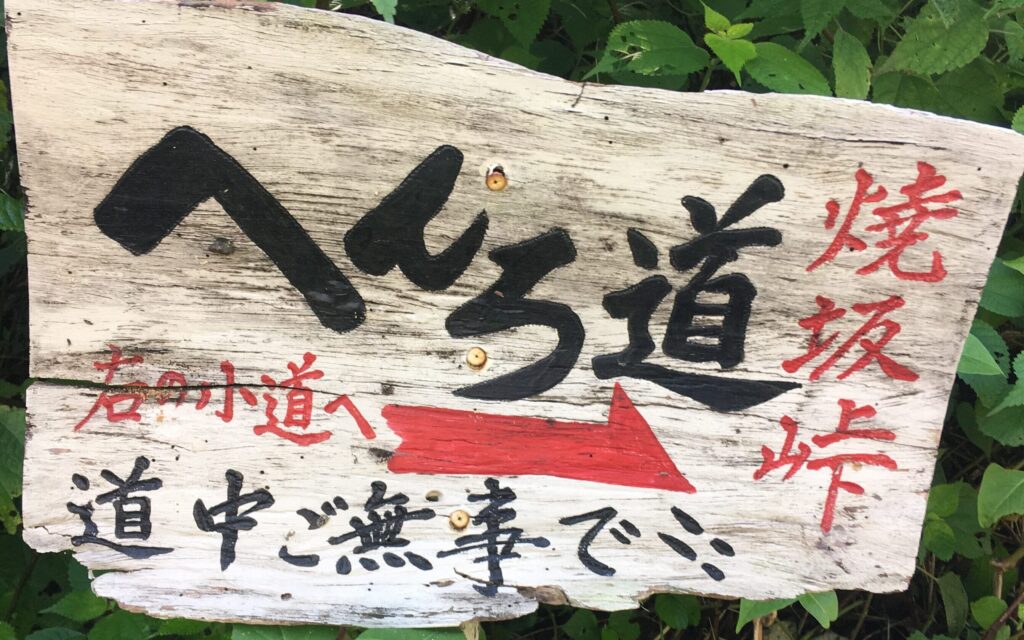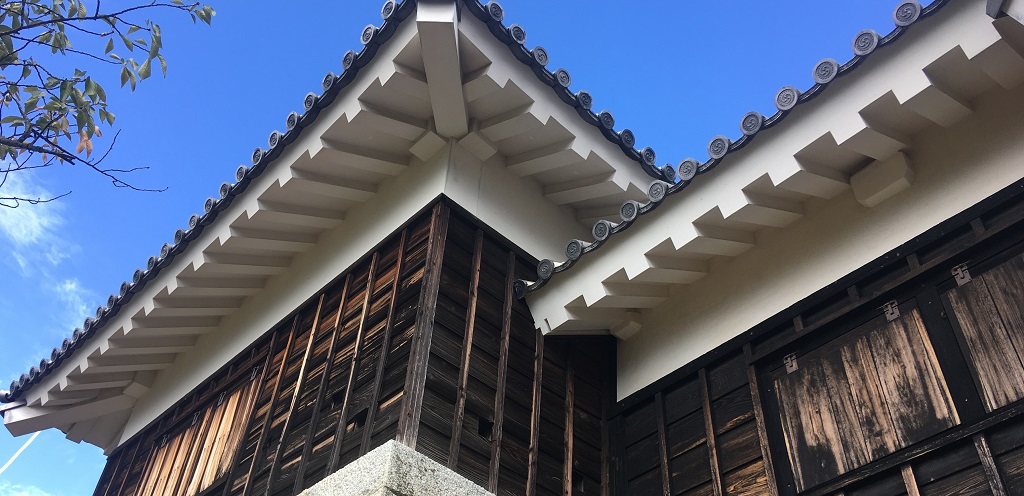Tip 1: The route guide is your lifeline: it describes the trail, supplies you with tips, offers translations of commonly used Japanese words and contains tourist ‘fun facts’.
Lifeline
The route guide is the true lifeline for any pilgrim. I discovered this quickly, due to advice from others, born from experience. I ordered the guide from a book store. Now I know that you can also order the guide directly from the author, and so I would place a direct order in Japan. At the same time, I would also order some other guides, to help me get in the mood.

Support with planning your routes
I only discovered the real utility of the guide during the first days of my journey. Apart from the useful maps and Japanese sentences, the guide also lists the kombini, and sleeping quarters. That was a boon for making plans ahead of time. Every afternoon, during the preparation for the next walking days, I would take the guide to pre-explore the route. Then I would immediately look at the charts with the elevation levels to check whether or not I would encounter mountains the next day(s). The amount of temples, and the routes with a lot of elevation fluctuation take a lot of time. I would allot a minimum of 30 minutes for every temple.
There is also a Japanese version
On day 12 I lost my route guide. That was a real bummer. I was in luck though, because later on in the day I had the opportunity to buy a Japanese version. With that, I could deal with most situations. However, that version is larger in size and fully Japanese. That meant a lot of google translating in order to discover what I could expect to come my way. The Japanese version would also generally lead me through the mountains instead of over them, and I prefer to avoid tunnels wherever I can. The big bonus that the Japanese version is that it contains (even) more sleeping spots. That is the case because not all Minshuku and Ryokan welcome western pilgrims.

Tourist information
Apart from the regular directions for the route, you will also have access to information about the areas you walk through. There were a few times where I made a detour from the prescribed route so I could admire something special. That is fun and educational. I did notice that I didn’t really want to be the tourist type. When I took two days rest in Matsuyama, I had a lot of difficulty switching between the rhythm of Mark as a pilgrim and the rhythm of Mark as a tourist. Other tourists that I met on the tram/train there did not make the experience better: they mostly saw the worse part of Japan. For me it was a boon to have the route as a guideline, and sometimes deviate from the henro, if I so desired.
The sutras
In the book you will find the basis for the sutras, the heart sutra. You are free to choose which ritual you perform in a temple. Many pilgrims decide to only declare the heart sutra. At henro house Ichiban I received a folder with a more expansive collection of sutras, in which were included the specific sutras for each temple. After I spoke the sutras from the folder in temple 12, I finally understood how it all worked. Then this folder became a support system to rely on whenever I would visit temples. I decided from temple two onward to do two full rounds in the temple; at the main altar, and at the daishi altar. It took me a small part of half an hour to complete, including the reception of the nokyocho in my booklet.
The route guide is your lifeline
In short: don’t undersell the guide and try to walk the Shikoku88 without it. There is always a little room left in your luggage, and you will start to value the little book more and more as you get further along in your journey.
